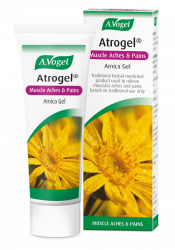What is your IT Band?
Your IT band, or your iliotibial band, is a ligament that runs down the outside of the thigh from the hip to the shin. It crosses both the hip and knee joints and attaches to the knee, acting as an important stabiliser that helps to flex and extend the knee joint. The IT Band helps to flex, abduct and internally rotate the hip, this large muscle feels almost firm as it helps to protect our outer thigh.

How is the IT Band linked to knee pain?
Iliotibial band syndrome (ITBS) is a common overuse injury of the connective tissues that are located on the outer thigh and knee. ITBS is also known as iliotibial band friction syndrome (ITBFS) because, in theory, it is a form of tendonitis where the iliotibial band can rub painfully over the bone in the side of the knee. However, more frequent research disputes the fact that the iliotibial band even moves at all! Whilst another claims that the IT band does indeed move however it is firmly locked into the side of the knee.1
When the IT band comes closer to the knee it becomes narrower and can result in rubbing between the IT band and the bone causing knee pain. Muscular imbalances or leg length discrepancies can result in ITBS because other areas of the body such as the pelvis have to accommodate for these imbalances. The most common symptom of ITBS is pain on the side of the knee however, this should not be confused with runner’s knee where the pain is most predominant on the centre of the kneecap.
It occurs when the IT band is tight or inflamed and is a common injury among runners, cyclists and other sports which repeatedly do a squatting action. ITBS often occurs as a result of an activity that causes the leg to turn inwards repeatedly. Iliotibial band syndrome is most likely to occur in women because their hips are often tilted in such a way that the knees can turn in slightly. Tension of the IT band can also be caused by imbalances or weak glutes or fasciae latae (hip flexors).
How to prevent Iliotibial Band Syndrome from causing knee pain
Rest, ice, compression, elevation (RICE)
Usually most IT band syndrome injuries can be resolved by some simple rest. Although the RICE (rest, ice, compression and elevation) approach is thought to be most effective in acute, fresh injuries, it isn’t thought to be beneficial long-term.2 This is because RICE doesn’t address the issues that led to inflammation and injury of the IT band in the first place.
Therefore, if nothing is done to change and remedy the cause then ITBS is likely to crop up repeatedly, although this time it will likely feel worse as it is aggravating a previous injury site. The best way to combat this is to seek the advice of a sports therapist, personal trainer or physiotherapist who will be able to observe and identify the problem at the root of the cause. Check out this blog to find out more natural ways that you can relieve knee pain.
Maintain strength and flexibility
Maintaining overall strength and flexibility in the body can help to prevent a variety of injuries and physical ailments. To read more about recovering from overuse injuries check out this blog. Focusing in particular on the lower back, hips, knees and leg muscles (including the hip flexors and glutes) can help to protect the body and prevent IT band syndrome from cropping up.
Research has found that weak gluteal muscles can be one of the major contributors in the development of IT band syndrome.3 This is particularly true of runners where weak hip muscles can interfere with your correct running form meaning that the workload your hips should be bearing is then piled onto the knees instead. Running downhill is also thought to be a factor as we have less control and a decreased ability to stabilise the pelvis. To find out how you can improve your running form check out our tips on how to improve your running technique.
A helping hand from Devil’s Claw
Devil’s Claw, also known as Harpagophytum which means ‘hook plant’ in Greek, received its name from the appearance of its fruit which is covered in hooks that attach to animals to spread seeds. Devil’s Claw is a traditional herbal remedy used for the relief of backache and muscle and joint pain and is still commonly used today. It is thought to work by naturally calming the inflammatory process without redirecting inflammation to another part of the body. It can therefore be beneficial in helping to relieve inflammatory iliotibial band syndrome pain.
Devil’s Claw is available in a variety of different forms including topical gels, tablets and oral tinctures. For ITBS I’d recommend our fast-acting Devil’s Claw tincture made from organically grown Devil’s Claw root. This tincture responds to inflammatory pain quicker than tablets as it does not need to be broken down in the digestive system in the same way that tablets do. For best results take our drops in a small amount of water 2 to 3 times daily.
Maintain good posture

Cycling with poor posture and a ‘toe-down’ rather than ‘heel-down’ pedal can result in IT band inflammation. Sometimes toe clips are to blame here, because if they are improperly aligned they can cause the foot to internally rotate and so this results in a similar effect as bowed legs. This increases the angle of the IT band as it crosses the knee joint and can result in an increased risk of inflammation.
Sitting for long periods of time won’t do your IT band any favours either because this keeps the IT band stretched which can lead to increased pain and inflammation.
1 https://www.painscience.com/tutorials/iliotibial-band-syndrome.php
2 http://velosportsrehab.com/it-band-syndrome/
3 https://www.ncbi.nlm.nih.gov/pubmed/15896092










